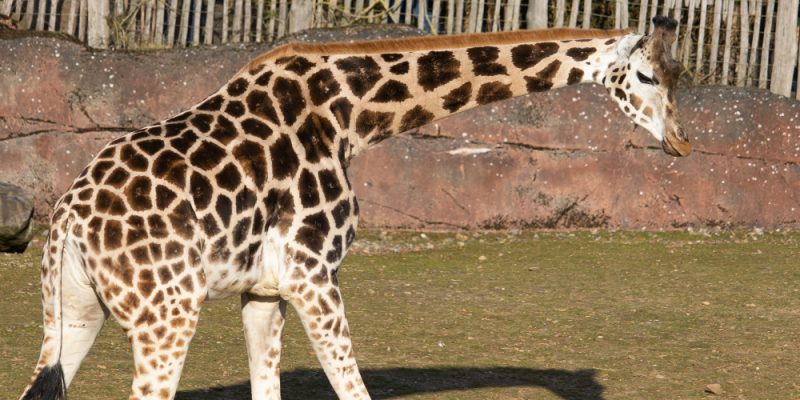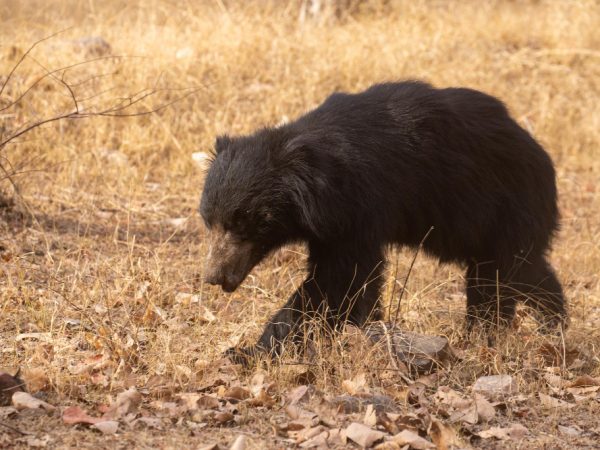The Giraffe with a Short Neck: A Curious Evolutionary Story

The giraffe is one of the most recognizable animals on Earth. Its long neck, graceful movements, and towering height make it a symbol of the African savanna. Yet few people realize that the giraffe’s ancestors once had much shorter necks. The story of how giraffes evolved from short-necked creatures into the tallest land animals is a fascinating example of natural selection and adaptation.
This article explores the evolutionary journey of the giraffe, the scientific discoveries that shed light on its transformation, and what this story reveals about survival, environment, and change in the natural world.
The Modern Giraffe: A Symbol of Adaptation
Today’s giraffes can reach heights of up to 18 feet, with necks that alone can measure more than six feet long. These extraordinary animals use their height to browse leaves from tall acacia trees, giving them access to food few others can reach. Their unique bodies are perfectly adapted for life in open savannas, where visibility and reach are key advantages.
However, the giraffe’s impressive neck did not appear overnight. It evolved over millions of years through gradual changes that improved survival and reproduction. To understand this process, we must look back at the giraffe’s ancestors.
The Ancient Relatives of Giraffes
The giraffe family, scientifically known as Giraffidae, includes not only modern giraffes but also their closest living relative, the okapi. The okapi, found in the dense rainforests of the Congo, is a much shorter animal with a relatively short neck and zebra-like stripes on its legs.
Fossil evidence shows that the ancestors of both giraffes and okapis lived millions of years ago and looked more like deer or antelope than modern giraffes. These ancient giraffids, such as Canthumeryx and Palaeotragus, had shorter necks and legs. They grazed and browsed on vegetation closer to the ground.
The Discovery of the Short-Necked Giraffe
One of the most important discoveries in understanding giraffe evolution came from the fossil of Samotherium, a giraffid that lived around 7 million years ago. Samotherium had a neck longer than that of the okapi but shorter than the modern giraffe.
This species represents a crucial “missing link” in the evolutionary chain. Its neck bones reveal intermediate characteristics that suggest how giraffes gradually developed their elongated necks. Through detailed fossil studies, scientists have been able to reconstruct how this transformation occurred over time.
Why Did Giraffes Develop Long Necks?
The evolution of the giraffe’s long neck has been debated by scientists for over a century. The most widely accepted explanation involves natural selection driven by food competition. During periods of drought or scarcity, individuals with slightly longer necks could reach leaves high in trees that others could not. These giraffes had better access to food, survived longer, and produced more offspring with similar traits. Over countless generations, the population evolved longer necks.
Another theory, known as the necking hypothesis, suggests that sexual selection also played a role. Male giraffes often fight by swinging their necks and striking opponents with their heads in battles for dominance and mates. Those with stronger, longer necks were more likely to win and reproduce. It’s likely that both food competition and mating success influenced neck evolution.
The Science Behind the Giraffe’s Anatomy
The giraffe’s neck contains the same number of vertebrae as a human neck—seven—but each bone is greatly elongated. These long cervical vertebrae are connected by powerful muscles and ligaments that support the head and allow for an impressive range of motion.
The giraffe’s heart is another marvel of evolution. It must pump blood up to the brain, nearly two meters above the heart, which requires enormous pressure. To handle this, giraffes have thick-walled arteries and an unusually strong heart, weighing up to 25 pounds. Special valves in their blood vessels prevent fainting when they bend down to drink water.
These adaptations show how a single evolutionary change—the elongation of the neck—led to many interconnected anatomical modifications across the giraffe’s body.
Fossil Evidence of Giraffe Evolution
Fossil discoveries across Africa and Eurasia have helped scientists map out the giraffe’s evolutionary timeline. Early giraffids like Canthumeryx lived about 25 million years ago and were roughly the size of deer. Later forms, including Samotherium and Bohlinia, show a gradual increase in neck length and leg height.
By the time Giraffa camelopardalis, the modern giraffe species, appeared around one million years ago, the animal had already developed the signature long neck and legs we recognize today. Fossilized neck vertebrae show consistent evidence of elongation, providing clear proof that the change was gradual and adaptive.
The Role of Environment in Evolution
The changing African landscape played a significant role in shaping the giraffe’s body. Millions of years ago, forests gave way to open savannas. As trees became more scattered, giraffes with longer necks could reach the higher branches that remained. This gave them access to a food source less available to other herbivores.
The ability to see long distances across open plains also became an advantage. Taller giraffes could spot predators like lions from afar, giving them more time to react. Environmental pressures like these encouraged the survival of taller individuals over shorter ones.
Comparing the Giraffe and the Okapi
The okapi offers a glimpse into what ancient giraffe ancestors might have looked like. It is much smaller and lives in forested areas where long necks are unnecessary for survival. Instead of browsing high branches, okapis feed on leaves, fruits, and fungi closer to the ground.
By comparing the two species, scientists can study how different environments lead to different evolutionary outcomes. While giraffes evolved for height and visibility in open habitats, okapis adapted for camouflage and maneuverability in dense forests.
Lessons from the Giraffe’s Evolution
The story of the giraffe’s long neck illustrates several key principles of evolution. It shows that small, beneficial changes can accumulate over time, leading to major transformations. It also highlights how multiple factors—like environment, competition, and mating—can work together to shape a species.
Furthermore, the giraffe’s evolution reveals how interconnected adaptations must be. A longer neck required stronger hearts, thicker blood vessels, and new behaviors to maintain balance and stability. Nature never changes one part of an organism in isolation; every adaptation influences the entire body.
Modern Research and Conservation
Today, giraffes are facing new challenges. Habitat loss, poaching, and climate change have caused populations to decline in many parts of Africa. Scientists studying giraffe genetics and evolution are also working to preserve these animals in the wild.
Modern DNA research has revealed that there are several distinct giraffe species, not just one. Understanding these genetic differences helps conservationists protect unique populations and ensure their survival for future generations.
The study of giraffe evolution continues to inspire scientists. It not only explains how these animals came to be but also reminds us of the delicate balance between species and their environments.
Conclusion
The story of the giraffe with a short neck is a remarkable chapter in the history of evolution. Millions of years ago, its ancestors were small, short-necked herbivores living in lush forests. Through the slow and steady process of natural selection, they transformed into the tall, elegant animals that roam Africa today.
The giraffe’s long neck is not just a physical trait—it is a symbol of nature’s ability to innovate and adapt. From food competition to mating rituals, from anatomy to environment, every aspect of giraffe evolution tells a story of resilience and transformation. Understanding this journey reminds us that even the most extraordinary creatures on Earth began with humble beginnings.
FAQs
1. Did giraffes really have short necks in the past?
Yes. Fossil evidence shows that ancient giraffids had shorter necks similar to deer or antelope. Over millions of years, they evolved longer necks through natural selection.
2. What was the main reason giraffes developed long necks?
The main reason was likely competition for food in tall trees. Giraffes with slightly longer necks could reach more leaves and had a better chance of surviving and reproducing.
3. How long did it take for giraffes to evolve long necks?
It took millions of years. The process began with short-necked ancestors and continued gradually through intermediate species like Samotherium before reaching the modern giraffe form.
4. Are giraffes and okapis related?
Yes. The okapi is the giraffe’s closest living relative. Both belong to the giraffid family but adapted to different environments—open savannas for giraffes and dense forests for okapis.
5. What can the giraffe’s evolution teach us about nature?
It teaches us that evolution is a slow, continuous process driven by survival and adaptation. Even dramatic changes like the giraffe’s neck evolved from many small, beneficial variations over time.
Also read: What Is a Sharpie Knife? DIY Guide and Safety Tips











